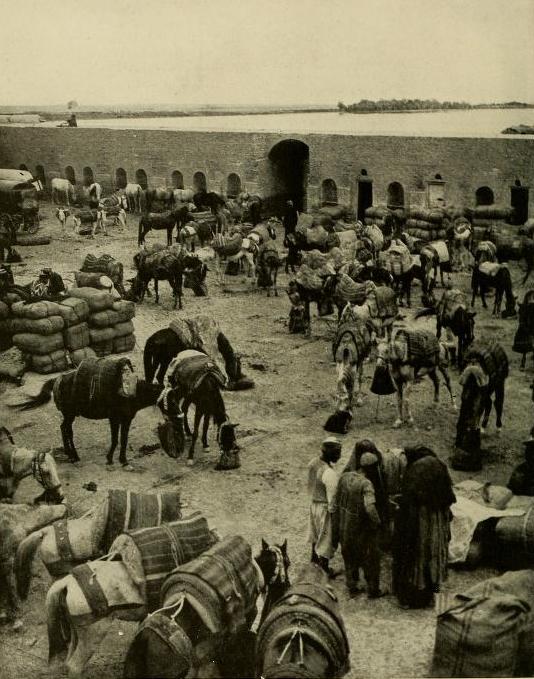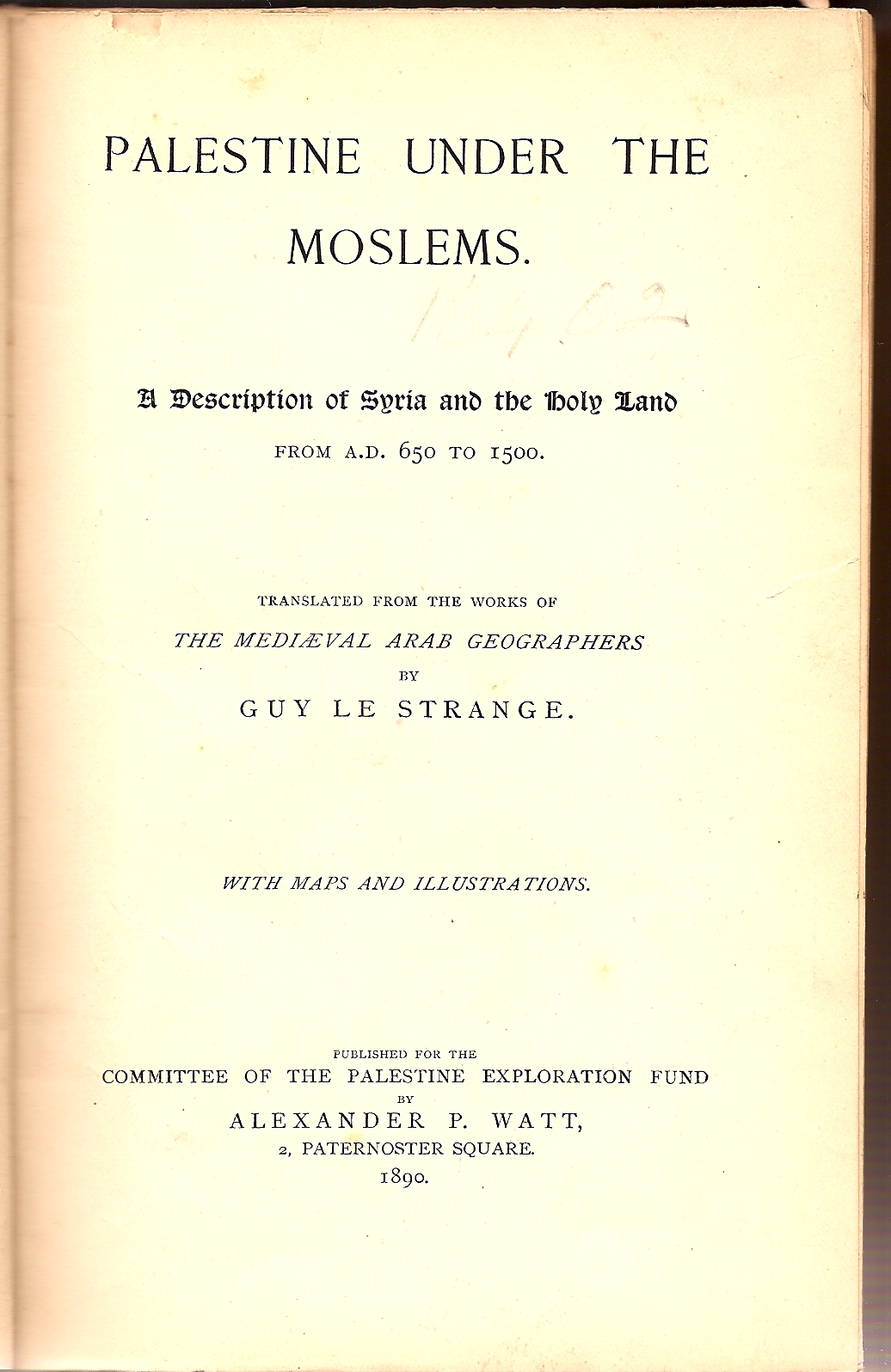|
Pumbeditha
Pumbedita (sometimes Pumbeditha, Pumpedita, or Pumbedisa; arc, פוּמְבְּדִיתָא ''Pūmbəḏīṯāʾ'', "The Mouth of the River,") was an ancient city located near the modern-day city of Fallujah, Iraq. It is known for having hosted the Pumbedita Academy. History The city of Pumbedita was said to have possessed a Jewish population since the days of Second Temple of Jerusalem. The city had a large Jewish population and was famed for its Pumbedita Academy - whose scholarship, together with the city of Sura, gave rise to the Babylonian Talmud. The academy there was founded by Judah ben Ezekiel in the late third century. The academy was established after the destruction of the academy of Nehardea. Nehardea, being the capital city, was destroyed during the Persian-Palmyrian war. The twelfth-century travel account of Benjamin of Tudela gives this description : :Two days Neharde’a, containing about two thousand Jews, some of them being eminent scholars. Rabbi R. Chen, ... [...More Info...] [...Related Items...] OR: [Wikipedia] [Google] [Baidu] |
Fallujah
Fallujah ( ar, ٱلْفَلُّوجَة, al-Fallūjah, Iraqi pronunciation: ) is a city in the Iraqi province of Al Anbar, located roughly west of Baghdad on the Euphrates. Fallujah dates from Babylonian times and was host to important Jewish academies for many centuries. The city grew from a small town in 1947 to having a population of 275,128 inhabitants in 2011. Within Iraq, it is known as the "city of mosques" for the more than 200 mosques found in the city and the surrounding villages. The city became a major center of resistance against the Iraqi government during the Iraqi insurgency and the city was the scene of fierce fighting during the First and Second Battles of Fallujah. These battles left much of the city heavily damaged. In January 2014, the city was captured by the Islamic State and suffered major population loss. On 23 May 2016, Iraqi forces announced the beginning of their attempt to retake Fallujah from IS. On 26 June 2016 the city was declared fully l ... [...More Info...] [...Related Items...] OR: [Wikipedia] [Google] [Baidu] |
Sherira Gaon
Sherira bar Hanina (Hebrew: שרירא בר חנינא) more commonly known as Sherira Gaon (Hebrew: שרירא גאון; c. 906-c. 1006) was the gaon of the Academy of Pumbeditha. He was one of the most prominent Geonim of his period, and the father of Hai Gaon, who succeeded him as Gaon. He wrote the '' Iggeret Rav Sherira Gaon'' (" heEpistle of Rav Sherira Gaon"), a comprehensive history of the composition of the Talmud.Abraham ibn Daud, "Sefer ha-Ḳabbalah," in Adolf Neubauer, "Medieval Jewish Chronicles" (Oxford, 1887) , i. 66-67 Life Sherira was born circa 906 C.E., the descendant, both on his father's and his mother's side, of prominent families, several members of which had occupied the gaonate. His father was Hananiah ben R. Yehudai, also a gaon. Sherira claimed descent from Rabbah b. Abuha, who belonged to the family of the exilarch, thereby claiming descent from the Davidic line. Sherira stated that his genealogy could be traced back to the pre- Bostanaian branch ... [...More Info...] [...Related Items...] OR: [Wikipedia] [Google] [Baidu] |
Pumbedita Academy
Pumbedita Academy or Pumbedita Yeshiva ( he, ישיבת פומבדיתא; sometimes ''Pumbeditha'', ''Pumpedita'', ''Pumbedisa'') was a yeshiva in Babylon during the era of the Amoraim and Geonim sages. It was founded by Judah bar Ezekiel (220–299 CE) and, with the Sura Academy founded in 225 by Abba Arika, was an influential and dominant yeshiva for about 800 years. History After Abba Arikha and Samuel of Nehardea died at the end of the first generation of the Amoraim, along with the designation of Rav Huna as dean Sura, Judah bar Ezekiel went to the city of Pumbedita and had established a new yeshiva there. Pumbedita Academy was active for about 800 years over the course of the eras of the Amoraim, Savoraim, and Geonim up until the days of Hai Gaon. At the time, the academies of Pumbedita and Sura became the most influential and dominant yeshivas of the Jewish communities' world, and all Torah decrees and other religious rulings were issued from these Yeshivas to all the Je ... [...More Info...] [...Related Items...] OR: [Wikipedia] [Google] [Baidu] |
Mosul
Mosul ( ar, الموصل, al-Mawṣil, ku, مووسڵ, translit=Mûsil, Turkish: ''Musul'', syr, ܡܘܨܠ, Māwṣil) is a major city in northern Iraq, serving as the capital of Nineveh Governorate. The city is considered the second largest city in Iraq in terms of population and area after the capital Baghdad, with a population of over 3.7 million. Mosul is approximately north of Baghdad on the Tigris river. The Mosul metropolitan area has grown from the old city on the western side to encompass substantial areas on both the "Left Bank" (east side) and the "Right Bank" (west side), as locals call the two riverbanks. Mosul encloses the ruins of the ancient Assyrian city of Nineveh on its east side. Mosul and its surroundings have an ethnically and religiously diverse population; a large majority of its population are Arabs, with Assyrians, Turkmens, and Kurds, and other, smaller ethnic minorities comprising the rest of the city's population. Sunni Islam is the largest r ... [...More Info...] [...Related Items...] OR: [Wikipedia] [Google] [Baidu] |
Babylonia
Babylonia (; Akkadian: , ''māt Akkadī'') was an ancient Akkadian-speaking state and cultural area based in the city of Babylon in central-southern Mesopotamia (present-day Iraq and parts of Syria). It emerged as an Amorite-ruled state c. 1894 BCE. During the reign of Hammurabi and afterwards, Babylonia was called "the country of Akkad" (''Māt Akkadī'' in Akkadian), a deliberate archaism in reference to the previous glory of the Akkadian Empire. It was often involved in rivalry with the older state of Assyria to the north and Elam to the east in Ancient Iran. Babylonia briefly became the major power in the region after Hammurabi ( fl. c. 1792–1752 BCE middle chronology, or c. 1696–1654 BCE, short chronology) created a short-lived empire, succeeding the earlier Akkadian Empire, Third Dynasty of Ur, and Old Assyrian Empire. The Babylonian Empire rapidly fell apart after the death of Hammurabi and reverted to a small kingdom. Like Assyria, the Babylonian state retained ... [...More Info...] [...Related Items...] OR: [Wikipedia] [Google] [Baidu] |
Talmud Places
The Talmud (; he, , Talmūḏ) is the central text of Rabbinic Judaism and the primary source of Jewish religious law (''halakha'') and Jewish theology. Until the advent of modernity, in nearly all Jewish communities, the Talmud was the centerpiece of Jewish cultural life and was foundational to "all Jewish thought and aspirations", serving also as "the guide for the daily life" of Jews. The term ''Talmud'' normally refers to the collection of writings named specifically the Babylonian Talmud (), although there is also an earlier collection known as the Jerusalem Talmud (). It may also traditionally be called (), a Hebrew abbreviation of , or the "six orders" of the Mishnah. The Talmud has two components: the Mishnah (, 200 CE), a written compendium of the Oral Torah; and the Gemara (, 500 CE), an elucidation of the Mishnah and related Tannaitic writings that often ventures onto other subjects and expounds broadly on the Hebrew Bible. The term "Talmud" may refer to either ... [...More Info...] [...Related Items...] OR: [Wikipedia] [Google] [Baidu] |
Day's Journey
A day's journey in pre-modern literature, including the Bible, ancient geographers and ethnographers such as Herodotus, is a measurement of distance. In the Bible, it is not as precisely defined as other Biblical measurements of distance; the distance has been estimated from . records a party of three people and two mules who traveled from Bethlehem to Gibeah, a distance of about 10 miles, in an afternoon. Porter notes that a mule can travel about 3 miles per hour, covering 24 miles in an eight-hour day. In translation by J.B. Bury (Priscus, fr. 8 in Fragmenta Historicorum Graecorum) ''We set out with the barbarians, and arrived at Sardica, which is thirteen days for a fast traveller from Constantinople.'' From Constantinople-Istanbul to Sofia is 550–720 km distance at a pace between 42 and 55 km /day. Based on a comprehensive review of references in Herodotus Herodotus ( ; grc, , }; BC) was an ancient Greek historian and geographer from the Greek city of ... [...More Info...] [...Related Items...] OR: [Wikipedia] [Google] [Baidu] |
Abbasid
The Abbasid Caliphate ( or ; ar, الْخِلَافَةُ الْعَبَّاسِيَّة, ') was the third caliphate to succeed the Islamic prophet Muhammad. It was founded by a dynasty descended from Muhammad's uncle, Abbas ibn Abdul-Muttalib (566–653 CE), from whom the dynasty takes its name. They ruled as caliphs for most of the caliphate from their capital in Baghdad in modern-day Iraq, after having overthrown the Umayyad Caliphate in the Abbasid Revolution of 750 CE (132 anno Hegirae, AH). The Abbasid Caliphate first centered its government in Kufa, modern-day Iraq, but in 762 the caliph Al-Mansur founded the city of Baghdad, near the ancient Babylonian Empire, Babylonian capital city of Babylon. Baghdad became the center of Science in the medieval Islamic world, science, Islamic culture, culture and List of inventions in the medieval Islamic world, invention in what became known as the Islamic Golden Age, Golden Age of Islam. This, in addition to housing several ke ... [...More Info...] [...Related Items...] OR: [Wikipedia] [Google] [Baidu] |
Mesopotamia
Mesopotamia ''Mesopotamíā''; ar, بِلَاد ٱلرَّافِدَيْن or ; syc, ܐܪܡ ܢܗܪ̈ܝܢ, or , ) is a historical region of Western Asia situated within the Tigris–Euphrates river system, in the northern part of the Fertile Crescent. Today, Mesopotamia occupies modern Iraq. In the broader sense, the historical region included present-day Iraq and Kuwait and parts of present-day Iran, Syria and Turkey. The Sumerians and Akkadians (including Assyrians and Babylonians) originating from different areas in present-day Iraq, dominated Mesopotamia from the beginning of written history () to the fall of Babylon in 539 BC, when it was conquered by the Achaemenid Empire. It fell to Alexander the Great in 332 BC, and after his death, it became part of the Greek Seleucid Empire. Later the Arameans dominated major parts of Mesopotamia (). Mesopotamia is the site of the earliest developments of the Neolithic Revolution from around 10,000 BC. It has been identi ... [...More Info...] [...Related Items...] OR: [Wikipedia] [Google] [Baidu] |
Guy Le Strange
Guy Le Strange (24 July 1854 – 24 December 1933) was a British Orientalist noted especially for his work in the field of the historical geography of the pre-modern Middle Eastern and Eastern Islamic lands, and his editing of Persian geographical texts. He was a scholar of the Persian, Arabic, and Spanish languages. Le Strange was one of the original trustees of the E. J. W. Gibb Memorial, an organisation which since 1905 has published the Gibb Memorial Series. He was born in Brussels, Belgium, the youngest child of Henry L'Estrange Styleman Le Strange of Hunstanton Hall, Norfolk, educated at Clifton College and died in Cambridge Cambridge ( ) is a College town, university city and the county town in Cambridgeshire, England. It is located on the River Cam approximately north of London. As of the 2021 United Kingdom census, the population of Cambridge was 145,700. Cam ....Probate Registry Grant – Feb 1934. Works Books * * * * * * Index Articles * References ... [...More Info...] [...Related Items...] OR: [Wikipedia] [Google] [Baidu] |



.jpg)

